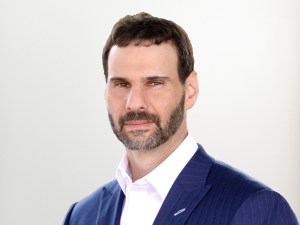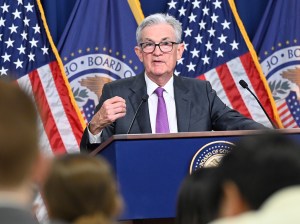CPE Asks: When Will CRE Investment Stabilize?
The Fed continues to be the main source of concern for the CRE market, according to BGO's Ryan Severino.

Investors do not want to sit on dry powder, but they don’t want to make a mistake, Severino said. Image courtesy of BGO
The U.S. economy is holding up better than many experts anticipated in the face of record high inflation, and after 11 interest rate hikes. After decelerating in the first quarter, the economy bounced back at the end of the first half of 2023. Meanwhile, an extremely tight labor market has become a defining characteristic of the current environment, according to Ryan Severino, BGO managing director, chief economist & head of U.S. Research.
With 25 years of economics, real estate, and investment research experience, Severino assesses the current state of the economy, particularly how the Fed’s actions are reverberating throughout the CRE investment market.
How is the Fed’s prolonged tightening impacting CRE investment and the U.S. capital markets?
Severino: Two primary interrelated factors come into play here. First, there is an evident surge in the cost of debt capital against the backdrop of a broad slowdown in economic growth over the last few years since the recession, which has triggered a downward repricing of assets.
However, perhaps of even greater significance, is the rapid escalation in interest rates that has given rise to heightened volatility in Treasury yields, leading to a substantial decline in transaction volume. Repricing alone would have put some downward pressure on transaction volume, but the Treasury volatility makes price discovery and transparency almost impossible.
Within this uncertain and erratic landscape, investors are generally adopting a cautious stance, opting to await signals from the Federal Reserve indicating the conclusion of these rate adjustments. Such signals are expected to mitigate the volatility in Treasury yields and help stabilize pricing. Historically, we have seen this pattern emerge during periods of high Treasury volatility, irrespective of whether Treasury yields are going up or down.
READ ALSO: Where the Smart-Money Is Investing in CRE
How is the job market holding up to the current economic environment?
Severino: The job market is holding up incredibly well. To me this stands out as the singular defining characteristic of the current economic environment. We are grappling with a structural labor shortage rooted in demographic shifts, which has been further intensified by the repercussions of the pandemic.
With a combination of early retirements, increased mortality rates, the lingering impacts of long-COVID-19 making working challenging if not impossible for some, and a temporary reduction on legal immigration, the already tight labor market has been pushed to even more constricted levels. We have never had such a pronounced labor shortage and certainly we have never had one during a period of such rapid Fed tightening.
Employers are hoarding workers, aware of the challenges tied to attracting and retaining talent. Their preference is to hold onto their workforce, even amidst economic deceleration. That results in a labor market that remains tight and resilient.
Consequently, if the labor market continues to generate hundreds of thousands of net new jobs, especially now that wages are growing faster than inflation, it is going to be difficult to enter a recession.
Inflation has slowed considerably over the past year, but it is still above the Fed’s target rate. How are investors dealing with inflationary pressures?
Severino: To the extent they could, investors looked to reposition their portfolios toward property classes with strong rent growth, such as the industrial sector, and/or assets with short-term leases that can be quickly adjusted to market fluctuations, like apartments. Additionally, some explored niche asset classes in pursuit of higher yields. While this strategy remains viable, it has become notably more demanding compared to the earlier stages of the economic recovery.
To what extent have the recent bank failures and lingering recessionary concerns eroded CRE investors’ trust?
Severino: Earlier in the year, those concerns appeared to be more pronounced. Although risks persist within the banking system, particularly among weaker, smaller regional banks, the potential for widespread, systemic risk seems limited. We also see the potential for more banking mergers and acquisitions ahead given the challenges and risks still present. We are not witnessing a repeat of the global financial crisis. And the economy continues to remain resilient, even getting stronger. While these concerns have not entirely dissipated, they have certainly lessened. The Fed continues to be the main source of uncertainty and concern for the CRE market.

Chair Jerome Powell answers reporters’ questions at the FOMC press conference on July 26, 2023, when the Fed announced its 11th interest rate hike since March 2022. Image courtesy of The Federal Reserve
A higher cost of debt, weakened demand, falling prices and a potential economic recession led to a rise in the number of distressed assets this year. Do you expect to see more CRE distress?
Severino: While not yet an avalanche, there has been a substantial increase in distress activity during the second half of the year, which we expect to further intensify during and into the next year. There is an unprecedented level of debt maturities that are not financeable in the current rate environment. The rapid increase in borrowing costs will create near-term liquidity issues. Borrowers will have to fund equity to pay off existing loans given rapidly tightening lending standards.
We are seeing the sale of assets to avoid refinancing at higher rates, the forced sale of assets from operators with liquidity issues, and opportunities for preferred equity to rescue broken capital stacks.
Besides conversions, how can CRE investors bring value to struggling assets?
Severino: There are many things CRE investors can do, depending upon how aggressive they want to get. They have the option to reduce asking rents or amplify concessions such as free rent or tenant improvement allowances. Collaborating with lenders on extended terms is viable, as lenders typically lean toward avoiding asset ownership.
Repositioning assets for enhanced favorability is also a possibility, especially in property types where a significant preference for quality and novelty persists. Also, many assets with distressed capital structures are underinvested. Time and targeted capital infusions could add value to some of these assets. And the evolving utilization of some spaces adds to the mix. While not all of these choices are palatable and maybe not feasible for some, a range of options do exist.
When do you expect CRE transaction activity to bounce back?
Severino: Activity should start to stabilize and recover once the Fed can signal to the market it is done hiking rates. While this communication does not need to be explicit, it should be sufficiently clear for the market to get the message. The market’s stabilization does not hinge on rate cuts; rather, it hinges on the assurance of a predictable environment. Investors do not want to try to catch a falling knife, or a bouncing knife.
This cautious sentiment is likely to persist until at least the first half of the upcoming year. Already, numerous transaction-oriented firms have pushed off their projections for business stabilization until next year. Investors do not want to be sitting on this much dry powder, but they really do not want to make a mistake, especially this late in the rate hiking cycle.
READ ALSO: Amid CRE Default Concerns, Bank Capital Rules to Change
How long should we expect the CRE market to remain in a holding pattern?
Severino: I think the fundamental thesis behind CRE is still sound. If anything, the pandemic demonstrated the importance of physical spaces in a way that maybe was not abundantly obvious to people before. But CRE will continue to evolve as it always does. Certain property categories within specific markets will gain favor, while others may wane. Yet, it is crucial to recognize that physical spaces remain integral to both the economy’s functionality and people’s lifestyles. Recent years have not shaken this foundation. If anything, the pandemic has heightened the importance of well-designed physical spaces.
Stagnation is not the desire of anyone in the CRE sector. Assuming—and it is important to emphasize this assumption—that the Fed is really done with its interest rate hikes in the latter half of this year, we can anticipate a swift stabilization and the reversal of current trends. Historical patterns show that once the Fed stops hiking, transaction volume stabilizes, and the performance of CRE investments improves. With everyone in the industry chomping at the bit to get going, this turnaround might occur more quickly than the typical post-tightening resurgence. Fingers crossed.
What are the main risks to the economic outlook? What could go wrong and throw the economy into a deep recession?
Severino: The Federal Reserve. I hesitate to express this viewpoint, as I do not consider myself a Fed critic. However, it is crucial to acknowledge that, as of now, the potential risks associated with implementing excessive tightening measures outweigh the risks of being overly cautious. Moreover, recent research shows two key things: Not much of the inflation we have been experiencing is coming from the labor market, and wage growth tends to follow inflation, not the other way around.
Many people are assuming a causality between higher wages and inflation because it superficially seems to make sense. However, research refutes this notion. We are not reliving the 1970s scenario, as substantial declines in labor union participation have occurred since then.
Additionally, the shift toward services and away from manufacturing makes it difficult to collectively bargain. Even in a tight labor market, the majority of workers possess limited leverage to demand wages that significantly exceed elevated inflation rates. But the Fed can easily overshoot and tighten too much if they are not careful. Thus far, the economy has taken the worst of high inflation and high interest rates and kept rolling, displaying its resilience. However, even a resilient economy has a breaking point if the Fed tightens too much.







You must be logged in to post a comment.